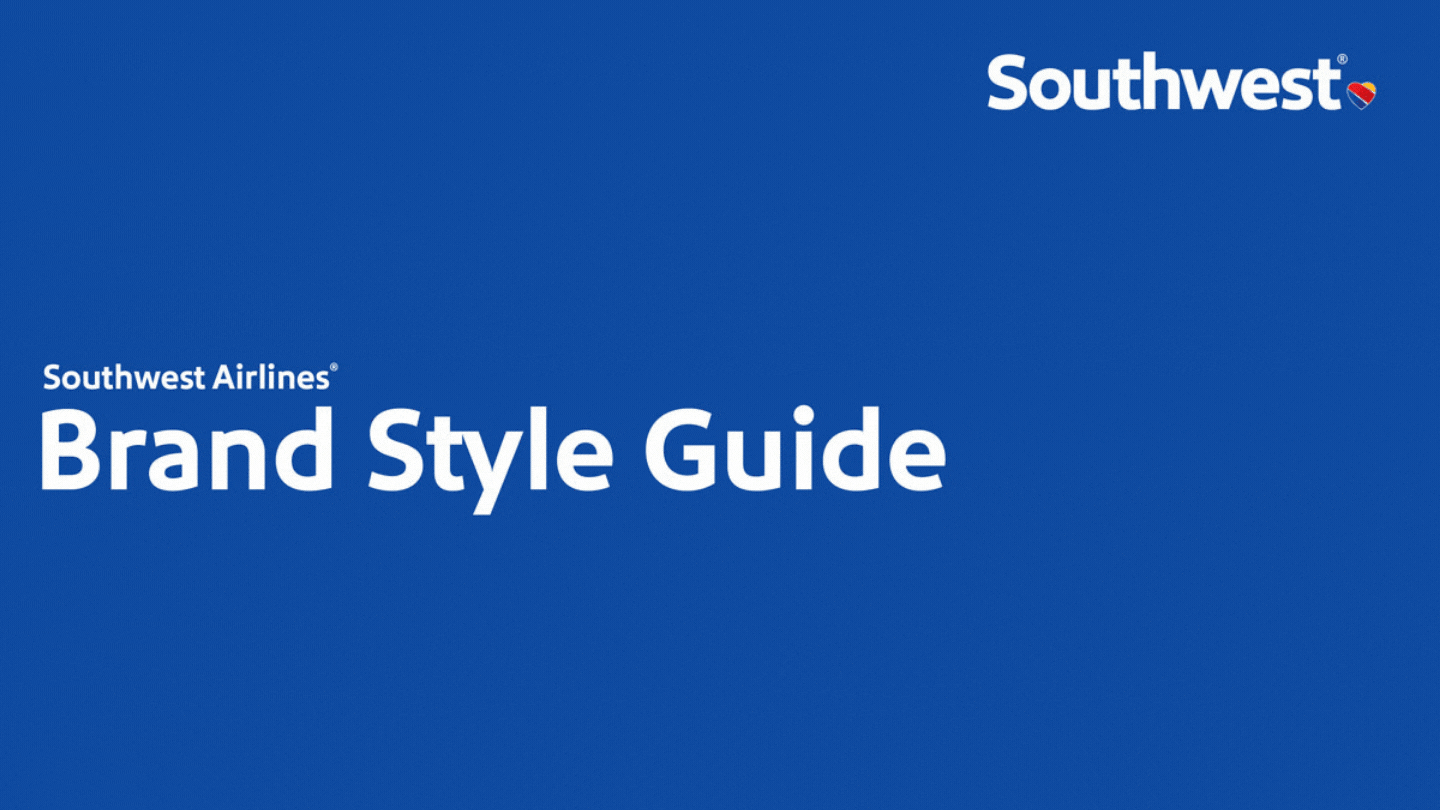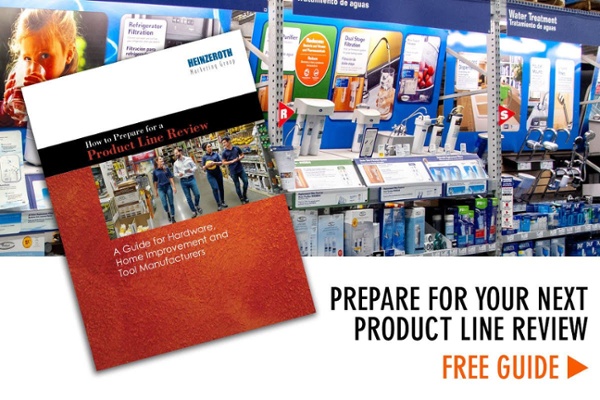
In most organizations, there are several people who speak on behalf of the company. The marketing team may oversee your company’s website, sales reps give presentations, and each employee might set up their individual email signature. It’s important that everyone keep your company’s message on-brand. A brand guide provides a framework for your organization's internal and external communications efforts and helps to ensure that all marketing materials, be they print, web, or multimedia, communicate a unified feel.
In this article:
A brand guide outlines a set of rules that go beyond a graphics style manual, focusing more on the emotional components of your brand. For example, the brand guide or "playbook" of Southwest Airlines is very intentional about the company's vision and values which are the centerpieces of the brand. All communications convey that central messaging across all customer touchpoints. Disrupting an industry that traditionally focused special attention solely on first-class passengers, Southwest places coach class in the spotlight, delivering a fresh experience of easy booking and changes, superior on-time performance, world-class hospitality and numerous other conveniences along with low fares. Their brand guide documents this philosophy and approved uses of their brand assets for everyone to see.

If you're planning on rebranding your company in the future, a brand guide will be an essential tool when it comes time to redesign your marketing materials and will provide a clear direction for creative content. Having this available and shared with everyone on your team will save time and money and ensure that there's no confusion.
What is a brand guide?
A brand guide is a document that provides information about an organization's internal and external branding efforts. The purpose of a brand guide is to define the consistent use of all aspects of the company's "brand." A successful business will have an effective online presence, but it won't stop there—the company should also have effective branding offline as well.
When creating a brand guide, it is important to follow these "5 Cs" of marketing:
- Communication - identify what you want your audience to know about your product or service.
- Consistency - identify your brand's "personality" and stick to it in all your marketing.
- Cohesion - ensure that your audience understands the "brand" and that your message is consistent.
- Conciseness - create a brand guide with no fluff, ensure it is clear, concise and understandable.
- Creditability and authority- make sure everyone buys into your brand so they will follow the guidelines you define in your brand guide.
What's the difference between a brand guide and a style guide?
A brand guide and a style guide are both documents that provide information about the branding of an organization. They have different purposes, though.
A Style Guide is typically used for design consistency while a Brand Guide is used to communicate the company's values, personality, and goals. The two should go hand-in-hand as many people come into contact with both the style and visual aspects of a brand.
What are the benefits of a brand guide?
A brand guide promotes consistency in all aspects of an organization's branding efforts. This allows the organization to focus on creating effective marketing materials without having to worry about whether each printed piece, website, video or other marketing material is "on-brand".
A successful online presence, however, does not guarantee success—a company should have an effective offline presence as well. A good company will not stop at a simple website; they'll also be active on social networks and maintain a consistent look with print and video materials. They'll use consistent wording across all platforms. A brand guide can help a company do this by providing guidelines for how everything should look and what terminology should be used.
What to include in a brand guide
The perfect format for a brand guide is one that reflects your company's culture and personality. If you're not quite sure what to include, here are ten suggestions that would benefit most companies:
- Company's mission, vision, values and goals. This sets the tone about what your business is striving for. Showcase your company's unique mission, vision, values and goals. As Simon Sinek says, "people don't buy what you do, they buy why you do it."
- Corporate identity includes assets like colors, logos, fonts and iconography that represents your company's personality. (pro tip: use photos that show your people as opposed to abstract stock photographs).
- Company personality and voice. This helps to humanize your company and differentiates you from your competitors. Demonstrate the unique "voice" of your brand that people can recognize immediately when reading your website or watching your videos. If you want people to engage with your brand content, then your voice should be easily relatable and engaging.
- Maintain a consistent look. Defining a color palette, typographic preferences, visual aesthetics (i.e. how many photos are used in each piece?) and principles for using images and video.
- Social media policy. It doesn't matter if you are using Facebook, Twitter, LinkedIn, Pinterest, YouTube, TikTok or Instagram, all of your marketing materials should be consistent across the different social media platforms.
- How your brand should respond on social media. The internet provides lots of opportunities for your prospects and customers to interact with your brand. They may post questions or leave comments on social media. Your response should be prompt, interesting and informative. It can also show an aspect of your personality and think about what is appropriate before posting a comment or answer. If the comment is negative toward your brand, be polite and empathetic to the user's comment, and offer to address their concerns offline.
- Message guidelines for all marketing materials. Define how you represent your company on all marketing materials (social media, websites, brochures, print ads etc.). Your audience will be sure to notice if your message is inconsistent across platforms.
- Target audiences. Be realistic about who you are trying to target and how they can relate to your company. Having a one-size-fits-all message won't work because not everyone will identify with your message. Define your audience's demographics and where they are in their buyer's journey so that you can appeal to them effectively.
- Company history is another helpful inclusion in a brand guide. If your company has been around for a long time, include this information and celebrate it! Let people know what led up to the current state of your company and include brief descriptions of some historical milestones.
- Information about the decision-making process used when developing new marketing materials and/or company policies.
Things to avoid when writing your brand guide
Trying to cram everything into one document could make it difficult to find information later. A good brand guide is organized so that important information is easy to find.
A brand guide doesn't need to be too lengthy or complex, but it's better to give too much information than not enough. It can always be edited later if your brand changes and needs a refresher.
Displaying the brand guide
The most important thing is for everyone in your company to actually use your brand guide. If you keep a copy online, make sure everyone has access. Consider displaying the brand guide near your marketing materials so that employees are reminded of its contents when they plan their posts for Facebook or Twitter. It's also a good idea to print out copies and post them in places where employees gather, like the break room or copy room.
Collaboration is key
It's important that everyone who works for your organization buys into your brand. When creating your brand guide, be sure to gather input and feedback from everyone involved. Your brand members need to be on board with the direction you want to go—otherwise, it will never happen.
Brand Enforcement
Ensuring that everyone in the company uses your brand's voice and personality correctly is no easy task. Things like email signatures, business cards, online interactions with customers, and other marketing materials are things that you want to make sure use your brand's voice. There is a term for these types of materials, "ambient brand," that refers to the "background" or "environmental" information regarding your company.
Make sure you have a plan for how you want your brand to leave a lasting impression on your audience. Use this article to help you start thinking about creating your own brand guide. It will be an essential tool in your business because it helps you create a consistent image for your company. Contact Heinzeroth Marketing Group to discuss your corporate branding or rebranding. We’ve helped clients develop their corporate identity and strategic brand guide for staying “on brand.”

